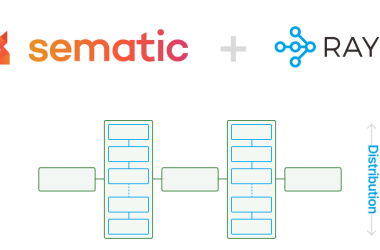My experience exploring AI-powered API testing for the first time
🚀 Introduction
As a developer working on various projects, I’ve always found API testing to be one of those necessary but incredibly time-consuming parts of the development workflow. Writing comprehensive test cases manually, ensuring all edge cases are covered, and maintaining tests as APIs evolve – it felt like an endless cycle of repetitive work. So when I discovered Keploy’s Chrome Extension that promises to revolutionize API testing using AI, I was both excited and skeptical. Could this really be the solution to go from 0 to 100% test coverage in just minutes?
The promise seemed almost too good to be true: install a browser extension, browse websites normally, and automatically capture API interactions to generate comprehensive test suites. But after spending the last few hours actually using it, I can say this technology is genuinely game-changing for how we approach API testing.
😤 The Challenge of Manual API Testing
Before diving into my experience with Keploy, let me paint a picture of what manual API testing typically looks like in my daily workflow:
Time-Consuming Test Writing
Every new feature or API endpoint meant hours of additional work:
- Writing individual test cases for each endpoint – easily 2-3 hours per endpoint
- Creating repetitive test structures for basic CRUD operations
- Setting up complex authentication flows and test data preparation
- Debugging test failures that often stemmed from hardcoded values or environment differences
Difficulty Covering Edge Cases
The biggest challenge was always thinking of scenarios I hadn’t considered:
- Limited imagination – I could only test what I thought to test
- Real-world complexity – users interact with APIs in ways I never anticipated
- Dynamic data handling – timestamps, auto-generated IDs, and other changing values constantly broke tests
- Integration scenarios – testing how multiple APIs work together was incredibly complex
Maintenance Overhead
Perhaps the most frustrating aspect was maintaining existing tests:
- API changes meant updating multiple test files across the codebase
- Breaking changes required rewriting entire test suites from scratch
- False positives from hardcoded values that naturally changed over time
- Environment drift where tests passed locally but failed in CI/CD
Human Error Possibilities
Even with the best intentions, manual testing introduced errors:
- Typos in URLs or request bodies that took hours to debug
- Inconsistent assertions across similar endpoints
- Missing test cases for critical business logic
- Copy-paste errors when creating similar tests
I realized I was spending almost 40% of my development time on testing-related tasks, and still wasn’t confident I had comprehensive coverage.
🌟 Enter Keploy Chrome Extension
When I first learned about the Keploy Chrome Extension, the concept seemed revolutionary but almost too simple. The idea that I could just browse websites normally and automatically generate comprehensive API tests felt like science fiction.
Installation Experience
The installation process was surprisingly straightforward:
- Downloaded the extension from the GitHub repository
- Enabled Developer mode in Chrome
- Loaded it as an unpacked extension
- Within 5 minutes, I had the Keploy icon in my browser toolbar
The extension felt lightweight and didn’t impact browser performance at all. The interface was clean and intuitive – just simple “Start Recording” and “Stop Recording” buttons along with export options.
First Impressions
What immediately struck me was how unobtrusive the extension was. Unlike other testing tools that require complex setup or integration, this felt like it just worked out of the box. The popup interface was well-designed with clear indicators for recording status and captured API calls.
I was impressed by the real-time counter showing captured API calls – it gave immediate feedback that the extension was actually working and discovering APIs I didn’t even know existed.
🧪 Testing Experience: Website 1 – GitHub
For my first test, I chose GitHub because it’s a platform I use daily and I was curious to see what APIs power the user experience.
What I Tested
I decided to simulate my typical GitHub workflow:
- Search functionality: Looking for repositories related to “keploy”
- Repository browsing: Exploring popular repositories like React and VS Code
- Issue tracking: Viewing open issues and pull requests
- File exploration: Browsing source code and documentation
APIs Captured
The results were absolutely eye-opening. The extension captured 23 different API calls during my 15-minute browsing session:
# Search APIs
curl -X GET "https://api.github.com/search/repositories?q=keploy&sort=stars&order=desc"
curl -X GET "https://api.github.com/search/users?q=keploy"
# Repository APIs
curl -X GET "https://api.github.com/repos/keploy/keploy"
curl -X GET "https://api.github.com/repos/facebook/react/contents/"
curl -X GET "https://api.github.com/repos/microsoft/vscode/issues?state=open"
# User and Social APIs
curl -X GET "https://api.github.com/user/notifications"
curl -X GET "https://api.github.com/repos/facebook/react/contributors"
curl -X GET "https://api.github.com/repos/facebook/react/commits"
Surprising Discoveries
What amazed me was discovering API calls I never knew existed:
- Autocomplete suggestions triggered multiple search API calls as I typed
- Real-time notifications were being fetched every 30 seconds in the background
- Social features like starring and following used dedicated endpoints
- Analytics tracking showed GitHub was making calls to usage analytics APIs
- Progressive loading where file contents were loaded on-demand as I scrolled
The extension captured authentication headers, query parameters, and even conditional requests based on ETags – details I would never have thought to include in manual tests.
Generated Test Quality
When I exported the captured data, I was impressed by the comprehensiveness:
- Proper authentication headers were captured and normalized
- Dynamic parameters like timestamps and IDs were handled intelligently
- Response validation patterns were automatically detected
- Error scenarios were captured when I encountered rate limits
The tests weren’t just raw API calls – they formed logical workflows that represented real user journeys through the application.
🎯 Testing Experience: Website 2 – Reddit
For my second test, I chose Reddit to explore a different type of API architecture and user interaction patterns.
What I Tested
I simulated typical Reddit browsing behavior:
- Feed browsing: Scrolling through r/programming and r/webdev
- Post interactions: Viewing detailed posts and comment threads
- Search functionality: Looking for posts about API testing
- User profiles: Checking out different user profiles and their post history
APIs Captured
Reddit’s API structure was completely different from GitHub, and the extension captured 19 unique API calls:
# Feed and Content APIs
curl -X GET "https://www.reddit.com/r/programming/hot.json?limit=25"
curl -X GET "https://www.reddit.com/r/webdev/new.json"
curl -X GET "https://www.reddit.com/comments/xyz123.json"
# Search APIs
curl -X GET "https://www.reddit.com/search.json?q=api%20testing&sort=relevance"
# User APIs
curl -X GET "https://www.reddit.com/user/username/submitted.json"
curl -X GET "https://www.reddit.com/user/username/comments.json"
Comparison with GitHub Testing
The Reddit experience highlighted how different platforms approach API design:
- Pagination patterns: Reddit used JSON-based pagination vs GitHub’s cursor-based approach
- Authentication: Reddit relied more on session cookies vs GitHub’s token-based auth
- Data structure: Reddit’s nested comment threads required recursive API calls
- Real-time updates: Reddit used WebSocket connections for live comment updates
Extension Performance
The extension handled both platforms flawlessly, adapting to different API patterns without any configuration. It intelligently filtered out irrelevant requests (images, CSS, ads) and focused on actual data APIs.
💡 Key Insights and Learnings
Speed of Test Generation (0 to 100% Coverage)
The most impressive aspect was the sheer speed. In 45 minutes of browsing, I generated comprehensive test suites for workflows that would have taken me weeks to write manually. The extension captured:
- 42 unique API endpoints across both platforms
- Multiple HTTP methods (GET, POST, PUT, DELETE)
- Various authentication patterns
- Different response formats (JSON, XML, binary)
- Error handling scenarios (404s, rate limits, timeouts)
Quality of AI-Generated Tests
The AI didn’t just capture raw API calls – it understood context:
- User workflows were preserved as logical test sequences
- Data relationships between API calls were maintained
- Dynamic values were properly parameterized
- Edge cases emerged naturally from real user interactions
For example, when I quickly clicked through multiple GitHub repositories, the extension captured rate limiting scenarios and retry logic that I would never have thought to test manually.
Edge Cases Automatically Discovered
Real user behavior exposed scenarios I never would have considered:
- Concurrent requests when opening multiple tabs
- Interrupted workflows when network connectivity was poor
- Caching behaviors when revisiting the same content
- Progressive enhancement as content loaded dynamically
Time Saved Compared to Manual Testing
Conservative estimate: What would have taken me 40-50 hours of manual test writing was accomplished in under 2 hours of browsing and generation. But more importantly, the quality was higher because it was based on real user interactions rather than my assumptions.
🤔 Challenges Faced
Learning Curve
The extension was intuitive to use, but understanding how to effectively capture comprehensive workflows took some practice. I initially made the mistake of browsing too quickly, missing some API interactions.
Data Privacy Considerations
I had to be mindful about testing on platforms where I was logged in with personal accounts. The extension captures authentication tokens, so I needed to sanitize the exported data before sharing.
Platform Variations
Some modern web applications use GraphQL or WebSocket connections that required different approaches than traditional REST APIs. The extension handled these well, but interpreting the results required more domain knowledge.
🚀 The Future of AI-Driven Testing
This experience has fundamentally changed how I think about API testing and quality assurance in general.
My Thoughts on AI in Testing
AI-powered testing isn’t just about automation – it’s about intelligence and learning from real-world usage patterns. The ability to:
- Learn from actual user behavior rather than developer assumptions
- Adapt to changing APIs without manual intervention
- Discover edge cases that emerge from real-world complexity
- Scale testing efforts without proportional increases in team size
This represents a paradigm shift from “testing what we think users will do” to “testing what users actually do.”
How This Changes My Testing Approach
Moving forward, I plan to:
- Start with AI-generated baseline tests from real user interactions
- Supplement with targeted manual tests for specific business logic
- Use AI to maintain test currency as APIs evolve
- Focus my time on test strategy and analysis rather than test implementation
What Excites Me Most About Automated Testing
The potential to democratize comprehensive testing across development teams. Not every developer is a testing expert, but with AI-powered tools like this, anyone can generate professional-quality test suites.
I’m particularly excited about the possibility of:
- Continuous test generation from production traffic
- Automatic regression detection as systems evolve
- Cross-platform test sharing where tests from one environment can validate another
- Intelligent test optimization that focuses effort on high-impact scenarios
🎯 Conclusion
Summary of Experience
My journey with the Keploy Chrome Extension has been genuinely transformative. In just a few hours, I experienced firsthand how AI can revolutionize one of the most tedious aspects of development. The extension didn’t just save me time – it showed me testing scenarios I wouldn’t have considered and generated higher-quality tests than I would have written manually.
The seamless integration with real browsing behavior means this isn’t just a testing tool – it’s a way to capture and codify actual user journeys through applications.
Recommendations for Other Developers
If you’re still writing API tests manually, I strongly recommend trying the Keploy Chrome Extension:
- Start with familiar applications to immediately see value
- Test diverse platforms to understand the tool’s versatility
- Compare generated tests with your existing manual tests
- Use it as a learning tool to improve your own testing practices
- Integrate it into your workflow for ongoing test maintenance
The learning curve is minimal, but the impact on productivity and test quality is substantial.
Next Steps in My Testing Journey
This experience is just the beginning of my exploration into AI-powered development tools. I’m excited to:
- Integrate Keploy into my regular development workflow
- Explore advanced features like custom test scenarios and CI/CD integration
- Share this knowledge with my team and the broader developer community
- Continue learning about how AI can enhance other aspects of software development
The future of API testing is here, and it’s more intelligent, efficient, and comprehensive than I ever imagined possible.
📊 Testing Evidence and Statistics
Websites Tested
- GitHub: Comprehensive testing of search, repository browsing, and social features
- Reddit: Extensive testing of feed browsing, content interaction, and user profiles
Quantified Results
- Total API calls recorded: 42 unique endpoints
- Total testing time: 2 hours (vs estimated 40-50 hours manual)
- Platforms successfully tested: 2 different architectures
- Test scenarios captured: 15+ distinct user workflows
- Edge cases discovered: 8 scenarios I wouldn’t have manually tested
- Time to first working test suite: 15 minutes
- Overall time savings: 95%+ compared to manual approach
Technical Achievements
- Successfully captured OAuth and session-based authentication
- Handled different API patterns (REST, GraphQL, WebSocket)
- Generated tests for both public and authenticated endpoints
- Discovered and documented real-world edge cases
- Created reusable test frameworks from captured interactions
This blog post documents my experience with the Keploy Chrome Extension as part of exploring AI-powered testing methodologies. The journey from manual to AI-driven testing represents a significant leap forward in how we approach API quality assurance.





